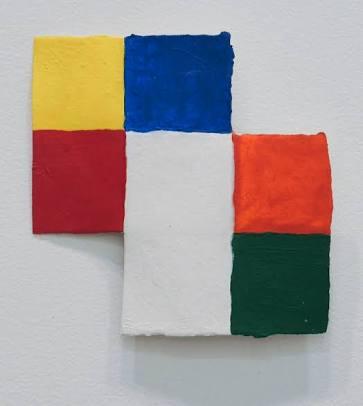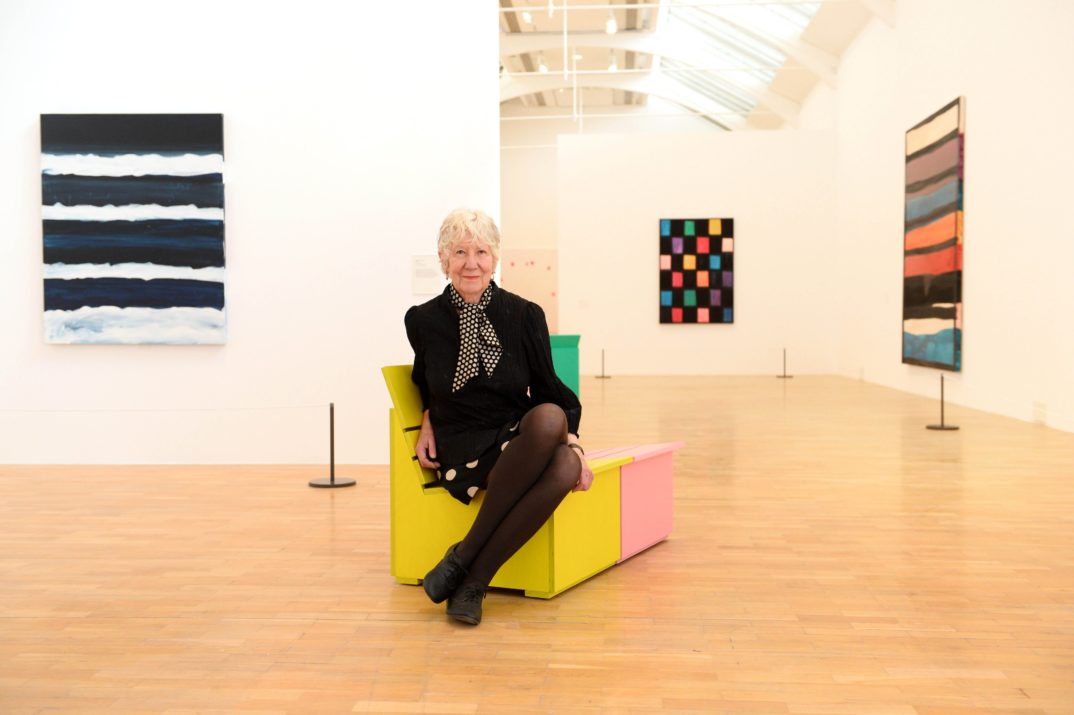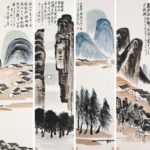Mary Heilmann,77, one of the preeminent painters of today, she was under the radar for a very long time. Fortunately, Mary Heilmann To Be Someone, a retrospective organized by the Orange County Museum of Art in 2007 that ended its tour at the New Museum of Contemporary Art two years later, brought this abstractionist to wider attention.
Currently, two solo exhibitions one in New York City, the other nearby make clear just how first rate Heilmann is. Five colorful canvases, a wall ceramic, and five cups and saucers on a shelf are on view at Dia Art Foundation’s Dan Flavin Art Institute in Bridgehampton, New York, through May 27, 2018. And “Mary Heilmann Paintings, 1975–78” at Craig F. Starr Gallery on the Upper East Side through October 28 features a dozen canvases from a series of red, yellow, blue paintings the artist made early in her career as well as three glazed ceramic bowls on a fireplace mantle. Heilmann has had an unorthodox career.
After majoring in English literature at the University of California at Santa Barbara with an emphasis on poetry, which was taught by the esteemed critic Hugh Kenner, she decided to turn her hobby making ceramics into something more substantial.
To do this, the artist, who was born in San Francisco in 1940, talked her way into the art program at Berkeley so that she could study with Peter Voulkos. It helped that she was talented. “I could throw a pot on a wheel right away,” she told me a few weeks ago as we sat in her studio in the Hamptons.Alongside the paintings in her solo shows, Heilmann continues to exhibit ceramics and wood chairs that she’s designed.She is practically self-taught as a painter. Having been an English lit major, she had to enroll in a painting course at Berkeley. Her fellow students, she recalls, were somewhat conservative. When David Hockney did a stint as a visiting artist, the sculptors paid more attention to him than the painters. Then there was the time Heilmann asked for help from her professor Frank Lobdell, the Bay Area figurative artist.

Mary Heilmann in her studio
Heilmann arrived in New York in 1968 as a sculptor. She’d been to the Big Apple before, and remembers seeing “The Responsive Eye,” the 1965 show at the Museum of Modern Art that launched Op Art. She thought she’d fit in among the Minimalists who hung out at Max’s Kansas City, Mickey Ruskin’s bar near Union Square. That turned out not to be the case, and Heilmann, on a lark, began painting.
Having witnessed lots of arguments at Max’s, she thought she would start one herself by working in the then-discredited field. Knowing the ins and outs of sculpture, it was a snap for her to make her own stretchers. And she used paints straight out of the jar, as she still does. When she went to Pearl Paint, the famous art supply emporium on Canal Street, and looked at all the colors she could purchase, she felt as if she were, in her words shopping for clothes.
She avoided using what she refers to as pretty colors. It was, after all, the early 1970s, when Robert Ryman was making a name for himself by covering all sorts of surfaces, from small red plastic squares to large cardboards, with white. By 1976, she was painting only with primary colors. Because her lines can be messy and there are splotches and drips of paint on the surfaces of many works at Craig Starr, it’s not readily apparent that Heilmann admired the art of Josef Albers.
However, she said, Color theory was important to her she listened closely to what the former Bauhaus professor had to say when he visited the art department at Berkeley.

Mary Heilmann’s work on display at the Whitechapel Gallery
From the get-go, many of Heilmann’s works looked abstract, but they are also grounded in reality, with squares, rectangles, and arrays of horizontal lines referring to windows, doors, and vents or jalousies. A red and black painting from 1972 on view at the Flavin Institute is titled First Vent, but it reminds Heilmann as well of prints from this period by Donald Judd. Without knowing any of this, it’s easy just to assume it’s a red painting with black lines. Heilmann said she was playing with logic and geometry.
Though Heilmann refers to the reds, blues, and yellows on the 50 or so paintings on canvas and on paper that she made in the late ’70s simply as primary colors, at Starr you’ll see that they are not the standard shades. They’re more vibrant, almost electric. Often, the base coat was red, as you can see from the sides of the stretchers. The two halves of one yellow work are decidedly different due to a denser undercoat that she applied to one side. Many of the edges of her wide lines are incredibly inexact. That’s because she’d apply pigments and then remove them with squeegees. She occasionally used her fingers

Mary Heilmann’s Life of Art
There are works that suggest Heilmann still thinks like a sculptor. Insightfully, Dia’s director, Jessica Morgan, points out that Red Mirage and Green Mirage executed as homages to Dan Flavin’s Icons are like paintings in the round. Then, there’s Rio Nido (1987), also on view at Dia’s Bridgehampton outpost. To complete it, Heilmann carved into the topmost layer of black. She removed small circular areas to reveal spots of color that sparkle like colored lights in a night sky.
In simple words, most of Heilmann’s work are about the act of making paintings.



What do you think?